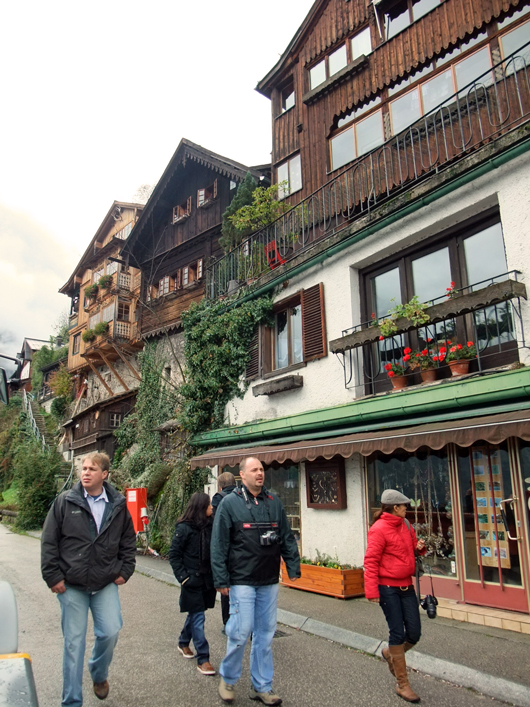< a rock art in Bhimbetka, two fighters have a shield and a sword >
This time, we look at primitive fine arts in India and Australian.
< a map of primitive fine arts、fine arts of glacial epoch were born in a red part, other primitive fine arts were born in No. 1~7. >
< map No.3, Bhimbetka hills in India
Central Highlands >
In Bhimbetka
hills,there are about three hundred of Rock Shelters that
have mural paintings.
Its oldest fine
arts were drawn in about 10,000 years ago. After that, it had been continuously
drawn by indigenous people.
Some
people say that there were the fine arts from about 30,000 years ago.
There were traces of early human activity in these
ruins also.
Footprints of modern
human in 75000 years ago were in southern India.
ビーマベトカ山には、壁画がある岩陰や洞窟遺跡が3百ヵ所ほど見つかっている。
概ね1万年前から描かれ、後に先住民によって描き加えらえた。
一部には3万年前の絵もあると言われている。
この遺跡には原人の生活跡もある。インド南部には75000年前の現世人類の足跡がある。
< two rock arts are thought of as a kind of
the oldest thing in Bhimbetka. >
Upper image shows that a cow 1.6 m in length, the cow that is ousting a
man, other man who put a hand on his waist, and thinly a crab on the left.
Lower image shows humped cattle.
The pictures of these oldest stages drew many big animals, for example
a water buffalo, a cow, an elephant, etc., but almost never drew figure paintings.
The images were drawn with only outline or were buried by geometric
pattern inside the outline.
The figure paintings were stylized simply, although the animal
images were quite realistic.
Over
the time, people drew person ride horse or elephant, battling by bow and spear,
tinseled horse or elephant, dancing while beating drum, honeybee collection,
and fishing.
上図には、長さ1.6mの牛、牛に追われ走る人、腰に手をあてる人、左に蟹が薄く見える。下図にはこぶ牛が見える。
これら初期の絵は、水牛、牛、象などを輪郭やその内側を幾何学模様で埋めた大きな動物像が多く、人物像はほとんどなかった。
動物はかなり写実的であるが、人物は様式化されている。
時代が下ると、馬や象の騎乗、弓矢や槍などでの戦い、盛飾を付けた馬や象、太鼓を打って舞踊、蜜蜂採集、漁労が描かれる。
< map No.4, Bradshaw in northwest Australia, mural paintings are in
such rock shadow >
There
are the oldest rock paintings of Australia in Kimberley of northwest Australia.
It is supposed that there are 100,000 places or more.
Its oldest fine
arts were drawn over 17,000 years ago. After that, it had been continuously
drawn.
Some
people say that there were the fine arts from about 43,000 years ago.
First
modern human of Australia crossed the Timor strait that became to narrow at the
glacial epoch in about 70,000 years ago.
オーストリア西北部のキンバリーにオーストラリア最古の岩壁画があり、10万以上あると推測されている。
最古のその美術は17000年前から描かれ、その後も描き続けられた。
一部には43000年前の絵もあると言われている。
オーストラリアの最初の現世人類は、7万年前頃の氷河期、狭くなっていたティモール海峡を渡った。
< two rock arts were thought of as a kind of
the oldest thing in Bradshaw. >
Upper image shows
a four man canoe with upswept prow and stern. It possibly was the world’s
oldest boat painting.
Lower image shows
a herd of deer with splendid antler that lined in a row.
Deer of this kind have never lived in Australia, but had
lived in Southeast Asia at the glacial epoch.
The people who
finished the voyage possibly wrote it depending on own memory.
上図、これはおそらく世界最古のボートである可能性がある、4人が乗ったカヌーの船首と船尾は上向きに反っている。
下図、これは立派な枝角を持つ鹿の1列に並んだ群れで、この種の鹿はオーストラリアにはおらず、氷河期の東南アジアに生息していた。
航海を成し遂げた人が記憶に頼って書いたのかもしれない。
< a rock art of dancing persons in Bradshaw >
They
wear various decorations to waist, ankle, and head, are dancing while wriggling
body and arm.
It
seems that the smiling face of dancing person is seen.
In
India and Australia, drawing mural painting is beginning from 10000 to 20000
years ago, too.
It is not improbable that is beginning from 30000 to 40000
years ago depending on the case.
Next time, we will look at primitive fine arts in Japan and American.
腰、足首、頭に飾りを着け、体や腕をくねらせ踊っている。
踊り手の笑顔が伝わってくるようである。
インド、オーストラリアでも1~2万年前に壁画が描かれ始めていた。場合によっては3~4万年前もありうる。
次回は、日本とアメリカ大陸の原初美術を見ます。





































